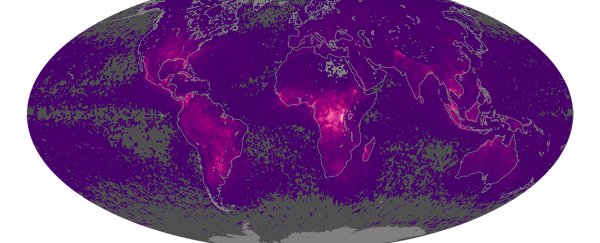Forget what you've been told, lightning definitely does strike twice. In fact, around the planet, lightning strikes around 40 to 50 times a second, and depending on where you live, you could be in for a whole lot more action.
NASA's Earth Observatory has just released a map that shows where lightning flashes most often, and it reveals that lightning is far more likely to occur over land than water, and is also much more common near the equator.
The map is based on data collected by their Tropical Rainfall Measuring Mission and OrbView-1/Microlab satellites between 1995 and 2013, and shows that a combination of atmospheric instability and greater convection leads to the formation of thunderstorms. And this type of instability is common over land because it heats up quicker than water.
So which spots on Earth receive the most lightning strikes? That would be Lake Maracibo in northwestern Venezuela, and the far eastern part of the Democratic Republic of Congo, both of which are located close to the equator. In Lake Maracibo, Reuters reports that there are lightning storms 300 days of the year.
This new map compiles data taken over a much longer time period than previous efforts to map Earth's lightning strikes, the researchers explain.
"The longer record allows us to more confidently identify some of these finer details," NASA scientist Daniel Cecil said in a NASA press release. "We can examine seasonality, and variability through the day and year-to-year."
Watch the Slate video on the new map to find out more:
You can also see all the world's lightning strikes mapped in real time over here. Just imagine how pretty it would look in real life.
